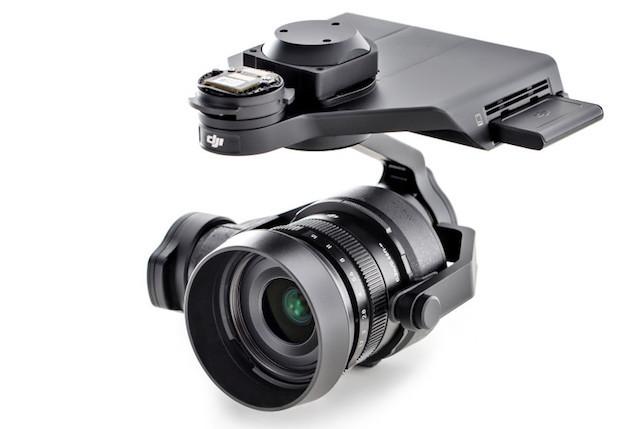-
Posts
1,600 -
Joined
-
Last visited
Content Type
Profiles
Forums
Articles
Everything posted by Don Kotlos
-
In case you were replying to my other comment, then specs guaranty what a card can do. When you are going out of spec then you have to run tests on your own to make sure each card is up to the task and I doubt many professionals have the time. Even in the case cards run at higher write speeds than what they are spec'ed for, you can still have dropped frames depending on the state of the card, how full it is, how old it is, what batch it is etc. That is why there are SD specs so you know what a card can consistently do and what it cannot do ... Anyways, I am sure professionals can use whatever they can to do the job and that might include shooting RAW with BMPCC or even 5Diii, but if I was one and wanted to shoot 4K RAW for paying jobs, I would invest in an Ursa mini instead.
-
Mb --> Mega bits (1/8MBytes) MB --> Mega bytes (8Mbits) There is a difference between max possible write speed (~250MB/s) and sustained minimum speed (U3 --> 30MB/sec). So if you want consistency you go with the U3 spec. Of course there are cards that can have much better sustained rate than U3, and this is actually what Blackmagic did with their pocket. So Sony could "pull a Blackmagic" and get away with less compression but then you would have few cards that work without dropping frames. The pocked was mostly an enthusias's type of camera so Blackmagic could get away with it. The FS5 is a proffessional one so I doubt Sony would do the same. I wish they did...
-
Yes 1080p is possible but I was just replying to Jimmy's question for 4k raw...
-
Currently I doubt Sony can make SD cards record 4K RAW with a new firmware. A 4K DNG frame without debayering is ~13MB. 24frames/sec x 13MB = 288MB/sec Currently the fastest minimum write speed of SD cards is U3 (30MB/sec). So you would need around ~10:1 compression which would need a fairly specialized chip that I doubt FS5 has.
-
Indistinguishable is used because of two things: 1. Your example footage falls in the high resolution deep dof shots that consist less than 20% of my type of shooting in which I would use the S35 mode. 80% of MY shooting is with humans as subjects and less dof. 2. Level of pixelpeepness. I might have different quality standards but in general a lot of people (and review sites like newsshooter and cinema5d ) agree with what I see. 1. 42MP As you mentioned. 2. Amazing AF performance. Not only things like the Eye detection but also tracking in video mode. 3. Less rolling shutter artifacts (see my comment below). 4. Ability to "zoom in" with the S35 and a prime lens. I cannot because I need it... I got my A7rii for $2700 and I have no need for 120p... That is NOT correct. While you can fix the rolling shutter from panning you can not a) fix the jello effect (A7sii & A7rii are less prone than the a7sii & NX1 due to IBIS) or b) the artifacts from objects moving relative to the sensor (ibis does not help here). So that includes humans moving in your image. So for MY type of shooting yes the reduced rolling shutter is more important than the potential aliasing artifacts that I rarely notice anyways. Again I want to make it clear that this is my personal experience based on my personal needs. I was just commenting on your statement "a7rii is a S35 camera". For me it's both and that is an advantage.
-
In my experience for daytime handheld shooting the FF 4K mode of the A7RII is almost indistinguishable from the S35 mode as far as resolution and noise performance goes. Add the much faster rolling shutter and I get better results in the FF mode in daytime handheld shooting that is my type of real world shooting. For others it might be different... So for me the A7RII is mostly a FF 4K camera and becomes S35 only when I need a)Low light b)Best resolution with deep DoF mostly with tripod c)crop for handy zoom.
-
But that is actually an advantage of the Blade. You can get faster SSDs with larger capacity much much cheaper than SDXC. For example a 128gb Sandisk Extreme Pro is $100. A 120gb SSD is less than $50 ...
-
Well that's very limiting. I know this is a budget device but why wouldn't they allow down scaling 4K from the HDMI? Right now even at double the money, the PIX-E5H looks like a better investment.
-
Thanks for the early look. It is great that it does down-scaling. Can you check/post the histogram and see whether it does some kind of dithering for the 8-->10 bit conversion? A proper method should not have distinct picks every 4 pixel values.
-

Sony A7S II Review Part 1 - Major Sunspot Defect
Don Kotlos replied to Andrew Reid's topic in Cameras
I was only joking cause I wish they added this functionality to the A7rii. Renaming things we want as "issues" seems to grab Sony's attention. Although black spots is more of an actual issue. -

Sony A7S II Review Part 1 - Major Sunspot Defect
Don Kotlos replied to Andrew Reid's topic in Cameras
How about the FF/S35 shortcut issue? -

Leica SL hands-on first impressions review from a video perspective
Don Kotlos replied to Andrew Reid's topic in Cameras
I feel this camera is exactly opposite to what this forum is a about. Expensive with very little to offer. -
OK I believe what you see is the remaining jello from the rolling shutter. Still less than the original A7s since the ibis compensates a bit. That's the nice thing about a7rii. In FF the rolling shuttetc is almost half of the a7sii. IBIS can create other types of artifacts such as jumpy movement when sensor moves by alot. That's why A7rii/A7sii are less usefull for movement type of shots.
-
I agree with you but these damn hot pixels of BMPCC in high ISOs are a pain to remove...
-
IBIS by itself cannot create warping or jello. You might have seen videos with warp stabilization from premiere. Have done extensive testing with A7rII that shares the same stabilization as the A7sII and have never seen the effects that you mention. Here is one where I compared it to the E-M1: Here is a test from newsshooter: And here is another test with a 150mm FF equivalent lens:
-
For static shots it should handle 85mm just fine. I use a 135mm with no problems.
-
It helps a lot. Especially for micro jitter. A major advantage over the A7s is that removes some of the jello effect to because of that. While it is great for static shots, movement shots are not as well controlled as with the IBIS from Olympus. Definitely better than a camera without IBIS though.
-

A story about 4K XAVC-S, Premiere and transcoding
Don Kotlos replied to Don Kotlos's topic in Cameras
Theoretically you are right, and that was what I expected but in reality I had hard time not loosing quality over transcoding. Only the 10bit uncompressed file is close but that is 70x the size! In most parts of the image it would be hard to see any difference. But where the H264 is failing (banding in the sky, macroblocking) the transcoding always made things worse. It seems like that. Differences between GPUs are smaller in the final rendering but during the playback a strong GPU can make a real difference. The TITAN X might be an overkill but a GTX 970 might be necessary for full resolution playback with the effects. Definitely. I went with the maximum number of cores (8) that can still be overclocked at 4.5MHz. For a new build I would suggest an overclocked 6 core. The article from pugetsystems that I mentioned is an excellent source for a new build. Yes, that's what I meant. Since any transcoding only reduces the quality of the footage, the original XAVC-S files should be used as the final render to any final codec. Yes, most laptops do not. High end gaming GPUs (GTX980m/GTX980) or the high end Quadros can be enough though. Its not that you cannot do it but as you say for heavy 4K editing a desktop should not be avoided. -
http://menexmachina.blogspot.com/2018/07/a-story-about-4k-xavc-s-premiere-and.html
-
Yeah you are correct. I thought that only the gimbal is fixed on the handle.
-
The problem is that from the information that I can gather the X5R will not shoot RAW on the SD card but only on the SSD that is on a different mount! "The ZENMUSE X5R has an integrated 512GB SSD drive for storing the lossless video recorded. DJI has designed an editing software specifically for lossless videos, enabling high-end filmmakers to easily edit and process the videos according to their own needs." So I am not sure if you can even have RAW with the OSMO.
-
DJI X5R + gimbal $5600 or BM micro studio 4K + Video Assist + nebula4000 for $2500? The DJI might be a slightly smaller package but keep in mind that a) it is untested b) people have problems with the wireless connection. The BM solution is more versatile (you can put other cameras) , tested and costs less than half the money! Yes, that was the X3 and the terrible goes for the X3 that a big part of the article was about. If you want to talk about the X5R then you have to take into account the $5600 price tag for a fairly specialized camera.
-
Did you see the footage? It looks terrible. E-M1 has better quality than this. Or even my note 5 really. Maybe with the X5R it will be great. But from what I see I would rather wait for the E-M1II.
-
Exactly. Sony's S-Log2 is flatter than the clog and the s-gamut3.cine is larger than the P3. So effectively sony has to put more colors in a smaller tonal range with limited number of samples (8 bit). A better test for skin colors would be with Cine2/Cine4 and Pro/Cinema colors on the A7Sii side. Add proper WB and slight adjustments of the color channels and it will be hard to see a difference.



